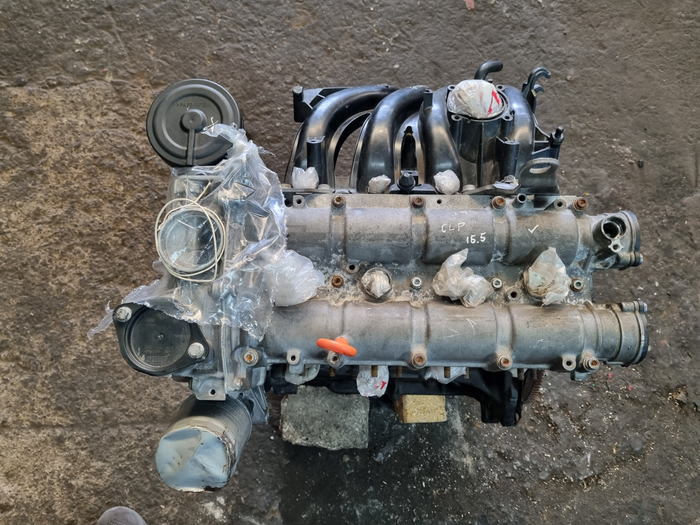Select a cost-effective clp engine for industrial applications.
Select a cost-effective clp engine for industrial applications.
Blog Article
How a Clp Engine Can Improve Performance in Various Industries
The advent of CLP engines marks a significant shift in functional efficiency across numerous fields, driven by their ability to enhance gas intake and lessen downtime. Industries such as production and logistics stand to get significantly from their durable design and consistent power outcome, which promise to simplify operations and improve performance. As organizations increasingly focus on sustainability alongside performance, the duty of CLP engines becomes also much more critical. What stays to be seen is just how these innovations will certainly shape the future landscape of commercial operations and their influence on more comprehensive economic trends (clp engine).
Review of CLP Engines
CLP engines, or Constant Fluid Propellant engines, stand for a considerable development in propulsion innovation, particularly for space applications. These engines use a continuous feed system that permits the continual expulsion of propellant, bring about boosted effectiveness and performance contrasted to typical strong or hybrid propulsion systems. By maintaining a constant circulation of fluid propellant, CLP engines can achieve more precise thrust control, which is important for maneuvering spacecraft in different goal circumstances.
The layout of CLP engines incorporates advanced products and innovative gas management systems. clp engine. This causes reduced weight and raised integrity, crucial elements for long-duration area missions. The continual operation decreases the risk of burning instability, a common obstacle in standard rocket engines.

Advantages in Manufacturing
The manufacturing of Continual Fluid Propellant (CLP) engines provides several noteworthy benefits that boost both efficiency and cost-effectiveness. One of the key benefits is the streamlined production procedure, which lowers the intricacy related to typical propulsion systems. By using fluid propellant, makers can accomplish better accuracy in engine efficiency, bring about enhanced power result and decreased waste.
In addition, CLP engines facilitate a higher degree of modularity, permitting much easier combination into different manufacturing lines. This versatility can dramatically lower lead times and boost general functional adaptability. Making use of CLP modern technology also has a tendency to lessen the need for extensive upkeep because of fewer moving parts, which equates right into minimized downtime and functional expenses.

Applications in Logistics
Leveraging Continual Fluid Propellant (CLP) engines in logistics supplies significant advantages in functional effectiveness and dependability. These engines offer a durable remedy for numerous transportation requirements, allowing the seamless motion of items across large ranges. The intrinsic style of CLP engines enables for regular power outcome, which translates right into smoother and a lot more foreseeable transport routines.
One of the vital applications of CLP engines in logistics remains in heavy-duty products transportation, where they can drive both ground and aerial cars. Their ability to maintain high efficiency under varying tons conditions ensures that distribution timelines are fulfilled, thereby enhancing client fulfillment. Additionally, CLP engines can be incorporated right into automated go to the website logistics systems, promoting real-time monitoring and maximizing path preparation.
Additionally, the toughness of CLP engines reduces upkeep downtime, enabling logistics firms to maximize their operational abilities. This is especially advantageous in warehousing procedures, where efficiency in taking care of and delivering items is important. As logistics remains to advance, the combination of CLP engines represents a forward-thinking approach that not just improves performance yet also sustains the market's expanding needs for reliability and rate.
Effect On Power Effectiveness
How do Continual continue reading this Liquid Propellant (CLP) engines enhance power performance in transport? CLP engines utilize a regular circulation of liquid gas, enhancing burning processes and preserving a stable thrust result. This layout reduces power losses connected with typical burning engines, where gas shipment can vary and bring about inadequacies.
The continual procedure of CLP engines permits a more effective thermal cycle, resulting in higher particular impulse compared to standard engines. clp engine. This equates to minimized fuel consumption for the exact same amount of job done, dramatically lowering functional costs throughout different transport industries, including aeronautics and maritime markets
Additionally, the ability of CLP engines to keep ideal performance under differing load problems reduces the demand for regular acceleration and deceleration, further improving gas efficiency. Improved energy efficiency not only adds to cost savings but additionally results in lower greenhouse gas emissions, aligning with worldwide i was reading this sustainability goals.
Future Trends and Innovations
Arising improvements in Constant Liquid Propellant (CLP) engine innovation guarantee to revolutionize the landscape of transportation performance and sustainability. As sectors pivot towards greener choices, CLP engines stand at the leading edge, integrating innovative products and layout methodologies that improve efficiency while minimizing ecological effect.
Among one of the most encouraging fads is the adoption of hybrid systems that incorporate CLP engines with renewable energy sources. This harmony can optimize gas consumption and reduce emissions, lining up with international sustainability goals. Advancements in computational fluid characteristics (CFD) are facilitating the layout of even more aerodynamically effective engines, leading to reduced drag and enhanced gas effectiveness.
Moreover, the growth of wise tracking systems is set to enhance operational effectiveness. These systems utilize data analytics and IoT technology to enhance engine efficiency in real-time, making sure that the engines operate within their most reliable specifications.
As research proceeds to explore different propellant solutions-- such as biofuels and synthetic gas-- the future of CLP engines looks promising. By harnessing these advancements, markets can not just boost their effectiveness yet also add significantly to a cleaner, much more lasting future in transportation.
Verdict
Finally, CLP engines stand for a significant innovation in performance across multiple markets. Their capacity to maximize fuel intake and minimize operational costs, combined with a continuous feed system, boosts power outcome and operational dependability. The assimilation of sophisticated products and less moving components decreases upkeep demands, while placement with sustainability goals settings CLP engines as a crucial modern technology for the future. Proceeded development in this field assures more enhancements in effectiveness and ecological efficiency.
Report this page